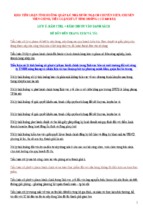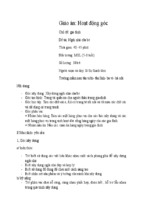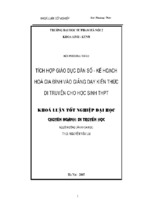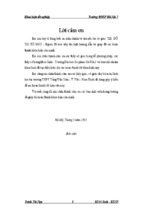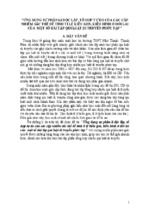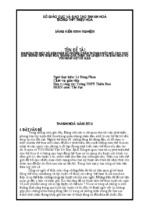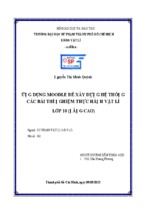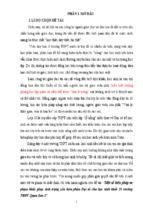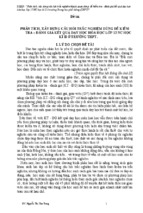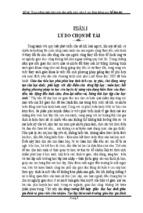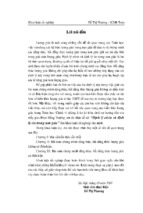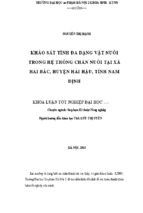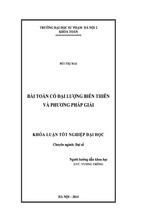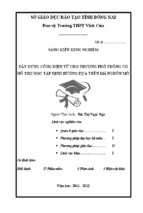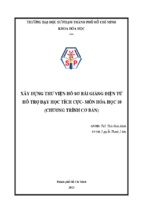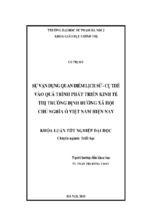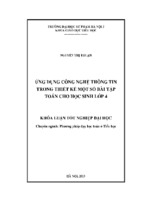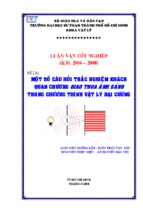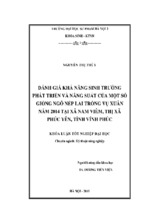2.2. Classifications of collcations
Since different researchers hold different views and approaches to collocation, different
aspects of collocation have been examined and hence, resulting different features, including
the classfications.
The most common classification is based on the specialized BBI Dictionary (Benson et al.,
2010), which divides collocations into two major groups.
The first group is grammatical collocations, which is a combination of “a dominant word and
a preposition or grammatical structure” (Benson et al., 2010, p. xix). The dominant word can
be a noun, an adjective or a verb and the grammatical structure includes to-infinitive, thatclause.
There are eight types of grammatical collocations as introduced in the table below.
N
o
1
2
3
Typ
e
G1
G2
G3
Pattern
Examples
noun + preposition
noun + to + infinitive
noun + that clause
change in, ability in/ at
an attempt to do it
fact that, we reach an agreement that
4
5
6
G4
G5
G6
on purpose, in fact
bored with, good at
ready to go, easy to learn
7
G7
preposition + noun
adjective + preposition
adjective + to +
infinitive
adjective + that clause
he was delighted that…, She was afraid
that…
Table 1. Types of grammatical collocations (adapted from Benson et al., 2010)
The eighth type (G8) contain 19 English verb patterns, hence, be presented in the table below.
N
o
1
Typ
e
A
Pattern
Example
She sent the book to him. =She
sent him the book.
I explained the problem to him.
D
verb + direct object + to + indirect object
= verb + indirect object + direct object
verb + direct object + to + indirect object
(no movement for dative)
verb + direct object + for + indirect
object = verb + indirect object + direct
object
verb + preposition + object
2
B
3
C
4
5
6
7
8
9
E
F
G
H
I
verb + to + infinitive
verb + bare infinitive
verb + V-ing
verb + object + to + infinitive
verb + object + bare infinitive
She continued to write.
Mary had better go.
They enjoy watching TV.
We forced them to leave.
She heard them leave.
10
J
verb + object + V-ing
He felt his heart beating.
11
K
verb + a possessive + V-ing
I cannot imagine their stealing
apples.
She bought a shirt for her husband.
= She bought her husband a shirt.
We will adhere to the plan.
12
13
L
M
14
N
15
O
verb + that clause
verb + object + to be + adjective/ past
participle/ noun/ pronoun
verb + object + adjective/ past participle/
noun/ pronoun
verb + object 1 + object 2
I confirmed that I was wrong.
We consider her to be welltrained.
She dyed her hair red.
The teachers asked the students
questions.
16 P
verb + object + adverbial
You carry yourself well.
17 Q
verb (+ object) + wh-word
She accept what I want.
18 R
it + verb + (to + infinitive)/ that clause
It surprised me that our offer was
rejected.
19 S
verb + predicate adjective/ noun
She was a teacher.
Table 2. G8 Grammatical collocations (adapted from Benson et al., 2010)
The second group of collocations is lexical ones, which, on the contrarty to grammatical
ones, do not consist of prepositions, infinitives or clauses. Common lexical collocations
consist of nouns, adjectives, verbs and adverbs. The seven types of lexical collocations are
introduced as follow.
N Typ Pattern
Examples
o
e
1
L1
verb (donation creation or activation) + make an impression, compose music
noun/pronoun/(prepositional phrase)
2
L2
verb (meaning eradication or
revoke a license, demolish a house
nullification) + noun
3
L3
adjective + noun
a crushing defeat, strong tea
4
L4
noun + verb
album comes out, bombs explode
5
L5
noun + noun
gallery space, a pack of dogs
6
L6
adverb + adjective
deeply absorbed
7
L7
verb + adverb
appreciate sincerely, argue heatedly
Table 3. Types of lexical collocations (adapted from Benson et al., 2010)
Other researchers (Lewis, 1997; Hill, 2000; McCarthy & O’ Dell, 2008) have a distinct way
to categorize collocations into 4 types.
Fixed collocations or Idiomatic collocations or Unique collocations are extremely strong
collocations that they cannot be modified, e.g. play it by ear.
Strong collocations are combinations in which words are closely attached with each other,
for example, “I felt deliriously happy”. In this example, deliriously means extremely happy
and rarely go with words other than happy.
Medium strength collocations are words that co-occur more frequently than weak
collocations, e.g. conduct a test.
Weak collocations consist of words that can combine with many other words, e.g. many
things can be long or short.
Nesselhauf (2003), together with Bahns (1993), categorizes collocations into two major
groups, namely, restricted collocations and free collocations.
Restricted collocations
Accordingly, many linguists and researchers tend to classify multi-word units into the
following three categories (e.g.; Lewis 2001; Cowie 1993; Bahns 1993; Nesselhauf 2003;),
though the termi- nology used by them might be slightly different:
Free collocations (also referred to as open collocations or free word combina- tions) consist
of items used in their literal senses and freely substitutable, such as open the gate, a nice car.
This category seems to include all possible and semantically natural combinations.
Notice that saying a collocation is a free one does not mean that there is no restriction at all.
The major difference between free collocations and restricted ones is that the restriction for
the former is a result of the semantic properties of the two components concerned, whereas
the restriction for the latter is “a some- what arbitrary convention of the language”
(Nesselhauf 2003: 225).
Restricted collocations (also referred to as fixed combinations or collocations) usually have
one item used in a non-literal sense, often a specialized, or figura- tive sense, and the other
used in its normal meaning such as run a company, bit- terly contested.
Woolard (2000, p.29) limited the term collocation to lexical collocation only for two reasons.
Firstly, it helps the student understand the term clearly and differently. Another reason is that
“it avoids overlap with traditional vocabulary exercises”, which are the grammatical
collocation with prepositions. Therefore, the present study follows the classfications of
collocations by Benson et al. (2010) in The BBI Combinatory Dictionary of English and
focuses solely on lexical collocations.
- Xem thêm -


